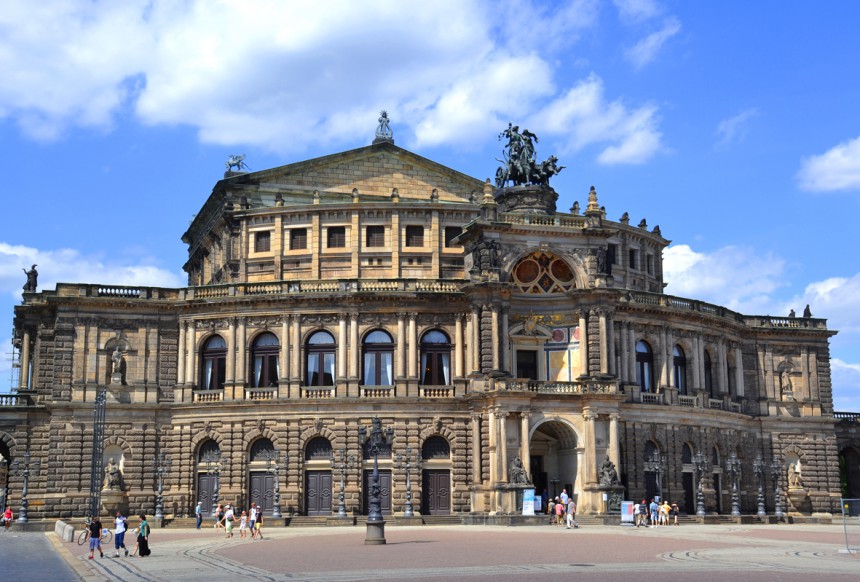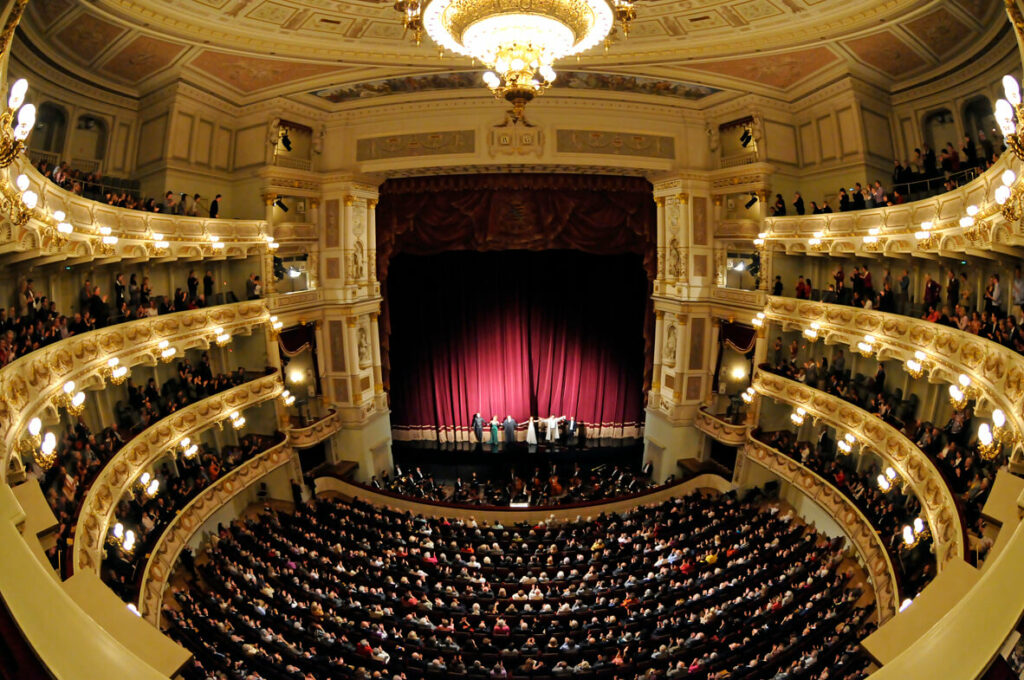How Can We Help?
Semperoper

Address – Schinkelwache, Theaterplatz 2, 01067, Dresden
Construction Dates – February 1838 – April 1841, 1878 (first reconstruction), 1985 (second reconstruction)
Opening Date – 12 April 1841
Capacity – 1,300
Architect – Gottfried Semper
Home to the Sächsische Staatsoper Dresden (Saxon State Opera), the Semperoper is an opera house located near the Elbe River in the historic quarter of Dresden. The opera house was originally designed and built by architect Gottfried Semper between 1838 and 1841. The opera house also serves as a concert hall for the Staatskapelle Dresden (Saxon State Orchestra) and primary performance space for the Semperoper Ballett. Following a fire in 1869, the opera house was rebuilt using the original plans of Semper. After the bombing of Dresden during the final months of World War II in 1945, the opera house was left with only the external shell standing. Once again the opera house was reconstructed using the plans of Semper, however new stage machinery, and an extension to the back of house facilities was added to secure the house’s long-term future. The reconstructed house opened on 13 February 1985, exactly forty years after the bombing.
Following a period of construction between 1838 and 1841, the Semperoper opened on 12 April 1841 with a performance of Carl Maria von Weber’s Jubilee Overture and Johann Wolfgang von Goethe’s Torquato Tasso. At the time of opening Semper’s architectural design was widely praised with audiences regarding the auditorium as one of the most beautiful theatres in the world. Between 1843 and 1849, Richard Wagner was the principal conductor of the opera company and had premiered a number of his operas at the Semperoper including Rienzi in 1842, The Flying Dutchman in 1843, and Tannhäuser in 1845. During this period Wagner also struck up a friendship with Semper and would debate architectural practices of the time. On 21 September 1869, the Semperoper burns to the ground and a temporary rapidly erected wooden framed theatre opens called the Bretterbude which once translated means wooden shack.
The second version of the Semperoper was completed in 1878, the citizens of Dresden demanded that Semper led the reconstruction however he was then in exile due to his involvement in the May 1849 uprising in Dresden. Among the other revolutionaries was Wagner, who escaped to Zurich with Semper after being placed on the government’s wanted list. Due to the exile, Semper had his son Manfred Semper lead the reconstruction using his plans. The opera house again opened with Weber’s Jubilee Overture and Goethe’s Iphignie auf Tauris. Until 1895 the opera house staged performances of both opera and plays and from 1896 there were daily opera performances. The opera house remained open until 31 August 1944, where it closed due to World War II, the final performance was Carl Maria von Weber’s Der Freischütz.
During the bombing on Dresden over the nights of 13 and 14 February 1945, just months before the end of World War II, the Semperoper was bombed and almost destroyed apart from the exterior shell. It wasn’t until 1977 where the remains had been secured, that the reconstruction began with the foundation stone being laid on 24 June 1977. The opera house was again rebuilt to Semper’s designs, however, the stage house was extended and new stage technology incorporated. Following eight years of construction, the opera house reopened on 13 February 1985, exactly forty years after the bombing. The inaugural performance was Carl Maria von Weber’s Der Freischütz which closed the theatre in 1944.

Sources/Images
Photograph of exterior and auditorium by the Sächsische Staatsoper Dresden. Images used with permission.
Magirus, Henrich, Die Semperoper Dresden (Leipzig: Edition Leipzig, 2004).
Contributor
Mark Scott